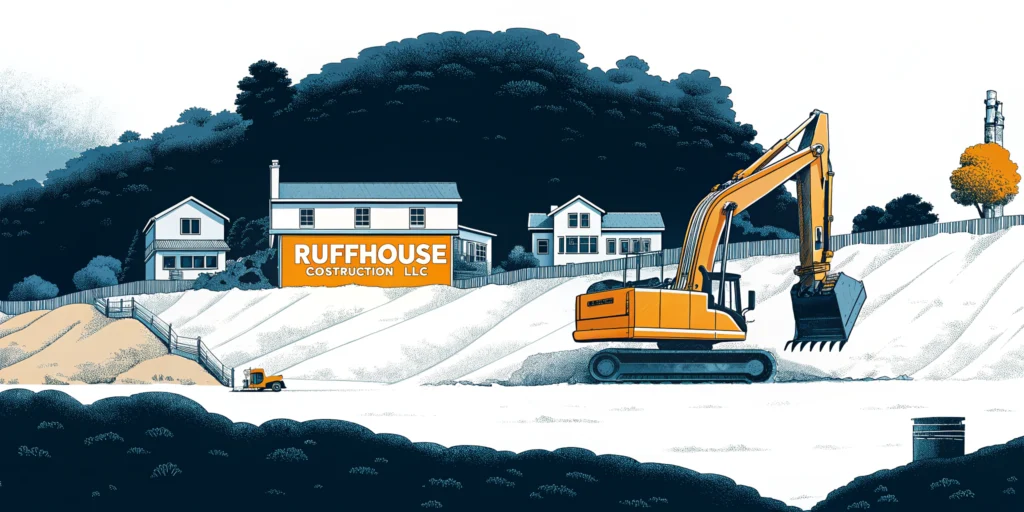When you explore soldier pile wall engineering in Seattle, you want a reliable way to manage steep slopes and stabilize your property. I know it can be challenging to balance cost, durability, and local code requirements, especially in places like Tacoma or the broader Puget Sound area. Below is a clear breakdown that helps you navigate the essentials.
Understand soldier pile walls
A soldier pile wall, also called an I-beam retaining wall, uses vertical steel piles (often H-piles or W sections) driven or drilled into the ground. Wood or concrete lagging sits between these piles to hold back the soil. This design leverages the piles’ strength to distribute loads and manage lateral pressure, which makes soldier pile walls affordable and adaptable.
Main components
- Soldier piles: Steel beams embedded into the soil.
- Lagging: The material set between the piles, typically timber or precast concrete.
- Tiebacks or anchors: Tensioned cables or rods inserted into the ground to add stability.
Temporary vs. permanent lagging
Temporary lagging, often timber, is strong enough for short-term projects (around 36 months). If you plan a permanent retaining solution, using heavier-duty materials like precast concrete can extend the wall’s service life to 50 or even 75 years. Timber lagging in wet conditions should never use hem-fir, since it lacks the durability you need.
Recognize Seattle and Puget Sound specifics
Soil and climate considerations
Seattle and the Puget Sound area have unique challenges from frequent rain and varied soil profiles. Soldier pile walls excel in these conditions, because soil arching effects transfer loads to the steel piles, helping keep deflections under control. For hillside properties or coastal sites, you want materials that tolerate moisture and can be adapted to steep angles.
Local code requirements
In Seattle, soldier pile walls often require tiebacks to be de-stressed at the end of a project, which can cost up to $3,000 per tieback. Although an extra expense, this step alleviates safety concerns in city rights-of-way. Plans also need to address deflection limits, typically ensuring the lagging’s movement does not exceed S/240, where S is the span between piles.
Follow the installation process
Driving or drilling piles
You can set steel piles in place either by driving, vibrating, or drilling. If noise or vibration is a concern near residential structures, drilling is often the best choice. These beams are then backfilled with concrete or a stabilizing mix.
Using lagging and tiebacks
Once excavation starts, you will slot timber or concrete lagging behind the flanges of the piles in manageable lifts. Anchors usually go on the second or third lift at a depth of 8 to 10 feet to secure the wall. In many Seattle-based designs, you might angle anchors up to 45 degrees to avoid utility lines.
Factor in costs
Estimating your project
Depending on your property’s layout, soldier pile walls range from about $35 to $150 per square foot. Geography plays a big role: in hilly Tacoma neighborhoods or steep Puget Sound shorelines, it might cost more to bring in equipment and reinforce the site. If you decide on a sheet-piling retaining wall instead, the typical price hovers around $15 to $50 per square foot, but you miss out on the heavy-duty capacity soldier piles offer.
Areas that impact cost
- Excavation prep and soil conditions.
- Pile materials and spacing.
- Lagging type (temporary timber or permanent concrete).
- Number and placement of tiebacks.
- Local labor rates in Seattle or Tacoma.
For more details on cost considerations, you can check out soldier pile wall construction costs seattle.
Maintain your soldier pile wall
Inspections
Regular checkups spot any shifting of piles or rotting in timber lagging. If you notice early signs of movement or water intrusion, reinforce the affected areas right away. In Seattle’s rainy climate, moisture can accelerate wear.
Long-term performance
Timber lagging may need replacement or additional fascia panels if you want extra longevity. Even if your soldier pile system is designed to last over half a century, staying proactive with repairs safeguards your investment. For ongoing upkeep, you can explore soldier pile wall maintenance in seattle for more details.
Common mistakes and expert tips
- Not accounting for deflection: Overlooking how soil arching impacts load transfer can lead to greater movement and future expenses.
- Misjudging timber service life: Timber lagging typically has a shorter lifespan than concrete. Consider future upgrades if a 75-year life cycle is required.
- Forgetting tieback de-stressing: Many municipalities in the Puget Sound region require de-stressing in public rights-of-way, so plan for it up front.
- Expert tip: Always verify the wood species. Avoid hem-fir in damp climates like Seattle to prevent premature failure.
Frequently asked questions
-
How long do soldier pile walls typically last?
Well-designed walls can last 50 to 100 years. If you use permanent lagging like precast concrete, you can approach the higher end of that range. -
Do I need a permit for soldier pile wall engineering in Seattle?
Yes, especially in the City of Seattle. Local codes often require permits and tieback de-stressing to address safety concerns and existing utilities. -
Is it expensive to build a soldier pile wall on a steep slope?
Building on a slope typically costs $25 to $100 per square foot, and it can be nearly double the labor cost of a flat site. Additional excavation, leveling, and tiebacks are often necessary. -
What if I need to upgrade timber lagging later?
You can retrofit your wall with precast concrete panels or other fascia. Many property owners select timber when they anticipate a future modification that will replace or cover the lagging.
When you’re ready to move forward, consider scheduling a consultation to confirm your site’s soil conditions and structural requirements. You will feel more confident knowing you have a plan specifically tailored to the unique demands of Seattle, Tacoma, and the wider Puget Sound region.
Ready to start your own soldier pile wall project in Seattle, Tacoma, or anywhere in Puget Sound?
Learn how Ruffhouse Construction delivers safe, code-compliant soldier pile and lagging wall installations for any site.
See our Soldier Pile Installation Services for details and request a free estimate today.

